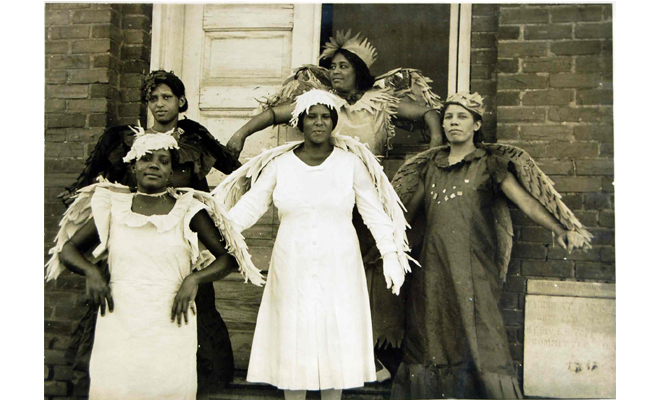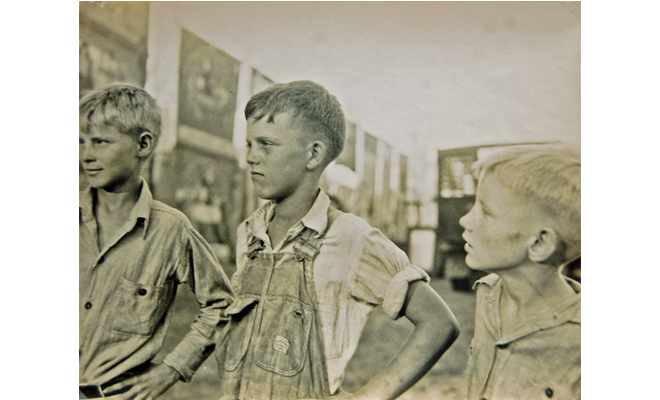Last Call: Eudora Welty at the Ogden Museum of Southern Art

Eudora Welty, Members of Pageant of Birds, 1930s. Vintage silver gelatin print. Courtesy the Ogden Museum of Southern Art, New Orleans. (c) Eudora Welty LLC; Eudora Welty Collection, Mississippi Department of Archives and History.
Editor's Note
It’s the last weekend to catch "Eudora Welty: Photographs from the 1930s and '40s" at the Ogden Museum of Southern Art. Before it's gone, Taylor Murrow reviews.
Pulitzer Prize-winner Eudora Welty is best known for the novels and short stories that cemented her status as one of the South’s consummate writers. What many may not know is that she was also an avid photographer. Before she had a single story published, a young Welty took pictures and continued doing so through the 1950s (when she lost her Rolleiflex camera at a Paris train stop, as curator Richard McCabe notes). Currently on view at the Ogden Museum of Southern Art is a selection of Welty’s photographs taken in the 1930s and '40s—her most active period as a photographer.
During this time, Welty was working for the Works Progress Administration as a publicity agent, traveling throughout her native Mississippi, writing articles and documenting Depression-era life in the South. Along the way, she also took personal photographs. These images are displayed alongside others taken in New Orleans and New York City, all depicting the rural and urban sides of an economically ravaged America. Most of the prints on view were made by Welty herself, many of them small wallet-sized or contact prints, with straightforward descriptions like Boy with Pig on a Leash or Front Yard, Yazoo County.
Welty referred to her photographs as “snapshots” on account of both their casual nature and her lack of formal training. While not technically masterful, Welty’s photographs succeed in more subtle ways. Behind the lens, Welty was a compassionate and curious onlooker, whose photographs present a deep empathy towards the hardships that Americans across the country were then enduring. Her ability to weave together images of faces and places, road signs and business fronts into a visual narrative mirrors her keen perception as a novelist. Those who are familiar with her fiction will easily see how these two creative halves informed each other, for example, how a photograph of “bottle trees” shimmering in a Mississippi yard influenced the form’s rich symbolism in Welty’s short story “Livvie.”
A photograph, by definition, is a moment in time, plucked from its context. Whether uniquely positioned as a white woman exploring African-American communities in the segregated South or as a Southern woman picturing the Northeast, Eudora Welty was ever the observant outsider, but she intuitively recognized those moments, those seconds of expression that, when captured, truly tell a story.

Eudora Welty, Sideshow, Jackson State Fair, 1939. Vintage silver gelatin print. Courtesy the Ogden Museum of Southern Art, New Orleans. (c) Eudora Welty LLC; Eudora Welty Collection, Mississippi Department of Archives and History.
Editor's Note
"Eudora Welty: Photographs from the 1930s and '40s" on view until July 14 at the Ogden Museum of Southern Art (925 Camp Street) in New Orleans.
The Ogden will host a panel discussion and gallery walk-through of the exhibition on Saturday, July 13, 2-4 pm.



